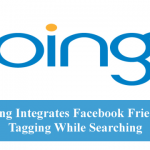
Los Angeles — Following the demise of popular recommendation site Digg, now massive social networking hub Facebook just last week rolled out its Digg-killer feature: recommendations bar, a new social plug-in that aims to recirculate reader traffic for Web publishers from around the web based on what your friends are reading.
The recently released feature dubbed as the Recommendations Bar, and it simulates some of the recommended articles pop-ups that sites have employed on their own – except this one, of course, is heavily integrated with Facebook.
“As a person examines an article, a small pop-up surfaces at the bottom of the screen, highlighting recommended articles and prompting them to like the page,” writes Facebook engineer Jeffrey Spehar on the company blog.
“Recommendations are based on content that friends have explicitly liked and shared in your app or website. … Just as how the Like button works now, when a person likes an article using the Recommendations Bar, a story is published back to their timeline and friends’ news feed.”
On the other hand, if you install the Recommendations Bar on your site, a small box with a couple of related articles that readers can click on to continue the time they spend on your site. Facebook claims that those recommended articles displayed in the Bar will be based on “content that friends have explicitly ‘Liked and Shared’ and only articles from within that particular app or website.”
The pop-up appears in the bottom left side of the screen; we are seeing it live on Facebook now, as a matter of fact, and here is what it appears like when it pops up on one of your pages:

And close up:

In order to further promote engagement and traffic, stories users have read are published on their Facebook Timelines and appear in the News Feed, luring their networks of friends into checking out the article, as well. However, you can conceal the new Recommendation Bar by clicking the top right corner, but a minimized tab remains on the site so you can open it back up if you want.
“In early tests, sites are seeing 3x the click through on the stories it recommends than through the Recommendations Box,” claims Facebook.
This is just one part of Facebook’s entire social plugin suite, a set of tools that comprehensively taps into publishing platform backends to incorporate Facebook widgets into Web sites. The list of other items includes the ubiquitous “Like” button, “Subscribe” button and “Comments” sections.
For publishers and developers, Spehar claims, that integration is simple, requiring “only a few lines of code. The functionality is also available as part of the Facebook for WordPress plug-in.” The developer also says initial partners are seeing a threefold increase in clickthroughs.
As with all of our social plugins, integration is easy and takes just a few lines of code. Simply configure the plug-in, copy the code and paste it on your site. The functionality also available as part of the Facebook for WordPress plug-in. We recommend you include Open Graph markup on your articles Facebook can properly display them on the site.
Get started now.


